MARIANI’S
Virtual
Gourmet
May 10, 2020
NEWSLETTER
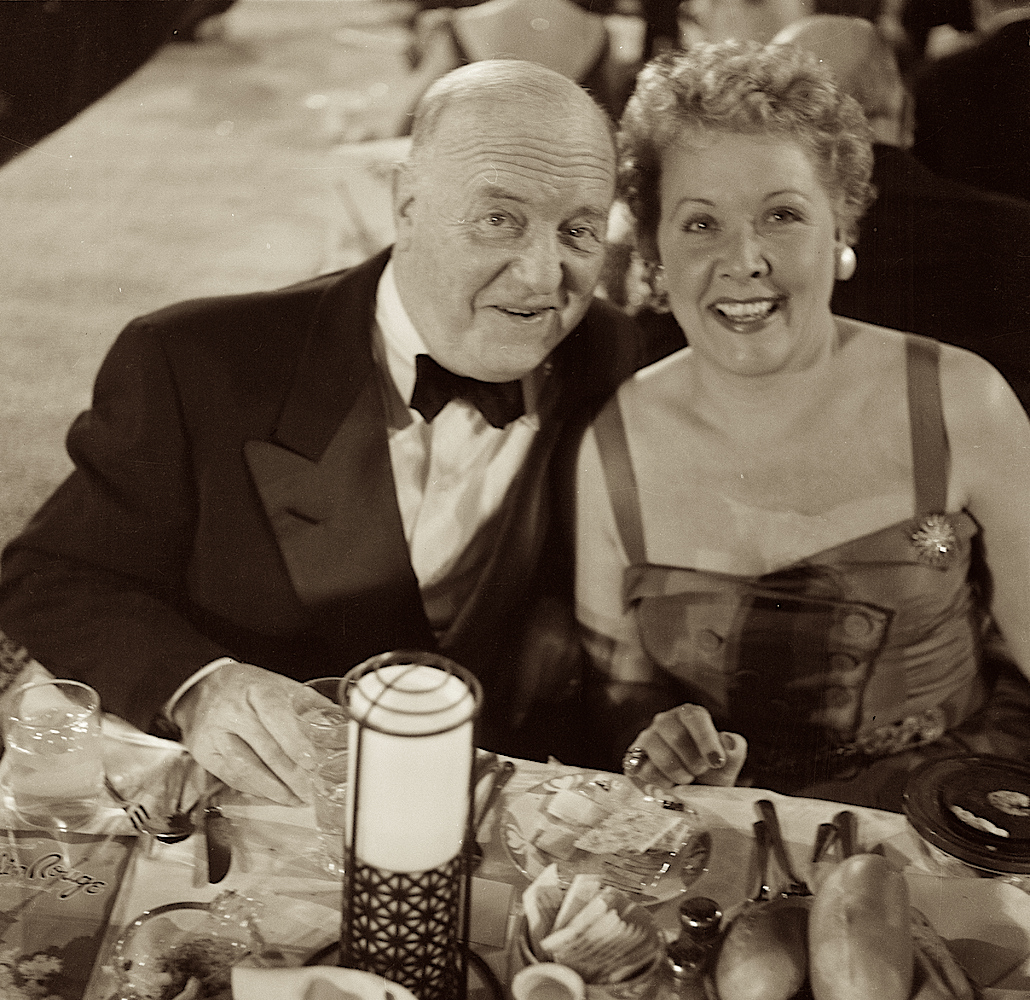
❖❖❖
IN THIS ISSUE
WHAT I'M MISSING
By John Mariani
NEW YORK CORNER
LOVE AND PIZZA
Chapter Seven
By John Mariani
NOTES FROM THE WINE CELLAR
GOOD ADVICE ON DRINKING WINE. . .
FROM THE 16TH CENTURY
By John Mariani
❖❖❖
WHAT I'M MISSING
Part One
By John Mariani
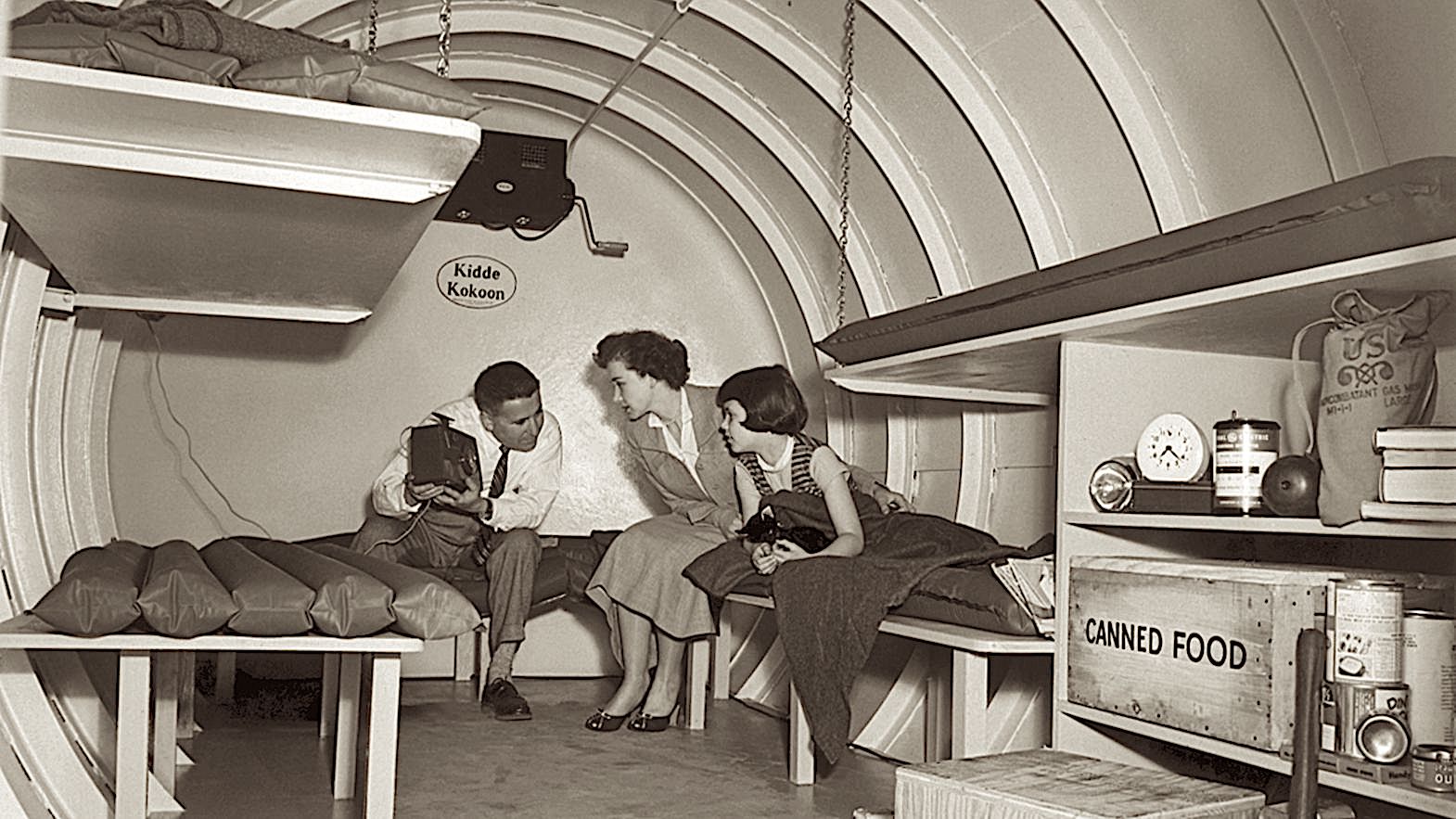
As a writer I have not
undergone a radical change from my usual routine
of staying home every day during this pandemic.
I can’t, however, travel or dine out at
restaurants, which is both professionally and
personally daunting after a lifetime of doing
so. But, while I’d love nothing more than to
dress up in a suit and tie and feast on a meal
at a great grand dining room like Le Bernardin
in New York, the Ritz in Paris or Da Fiore in
Venice, the foods and places I’m missing most
are considerably down the totem pole. Here are
some of my favorites, currently unavailable.
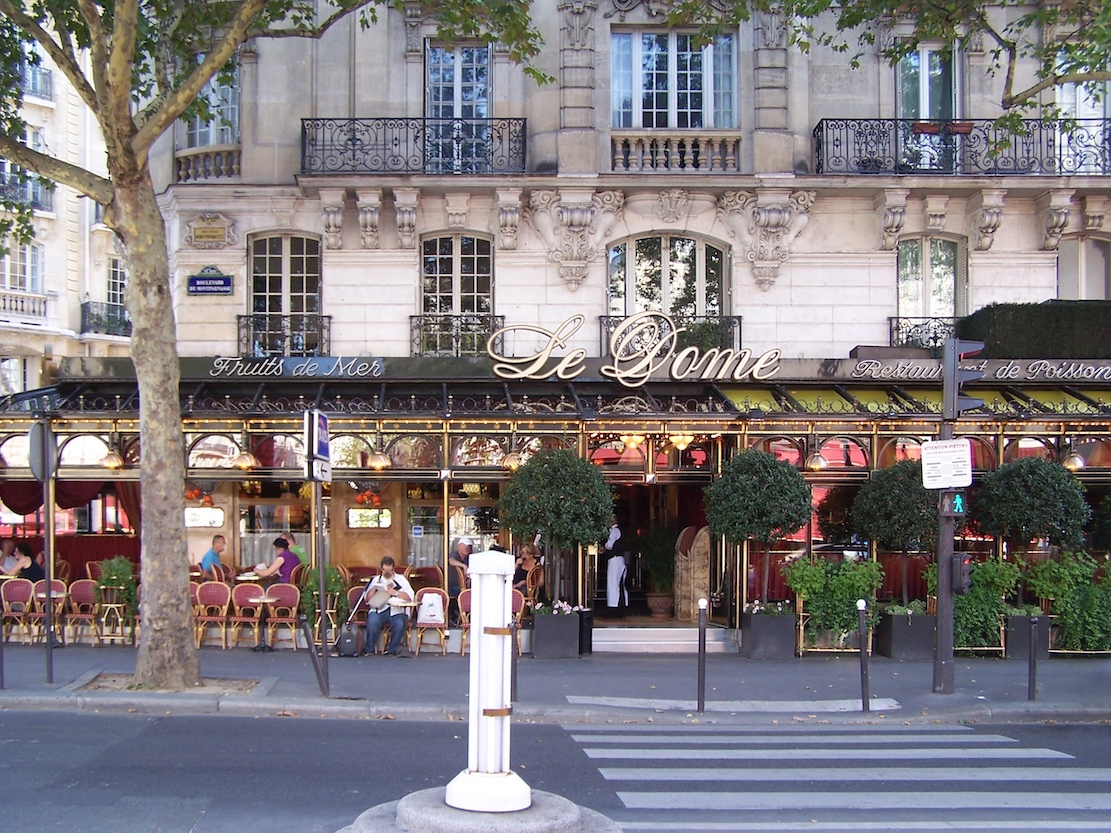
The
shellfish towers at Le Dôme in Paris—Whatever
coquillages
come in freshest that morning land at Le Dome’s
door, which opened in 1898. It’s a place the
so-called Lost Generation made famous when in the
1920s it was part of what Malcom Cowley called the
“heart and nervous system of the literary colony.”
It was remodeled in 1986 but you can still see
photos of all its famous clientele while feasting
on Marennes oysters and Chablis.
Hot
chocolate at a café on Las Ramblas in Barcelona—This is not cocoa made
from a powder. It is really melted chocolate,
thick as hot fudge and best appreciated with the
crisp fritters called churros.
Any number of places along Barcelona’s main street
serve it, including inside La Boqueria market,
Patîsserie Escriba and Dulcinea.
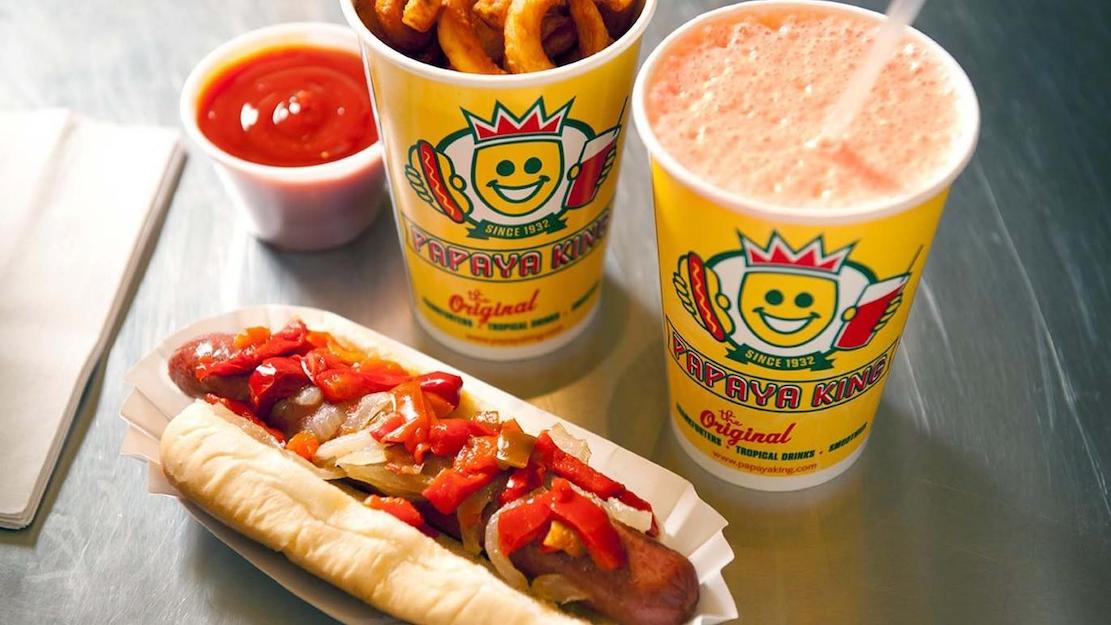
New
York pretzels and Papaya King—Indigenous
items
in New York’s rich food culture, fat, yeasty,
heavily salted pretzels are served warm from
street carts, along with chestnuts. Papaya
King, with several locations—the original opened
in 1931 on East 86th Street and Third
Avenue—became famous for its papaya fruit juice
served with a plump hot dog with onions and
relish.
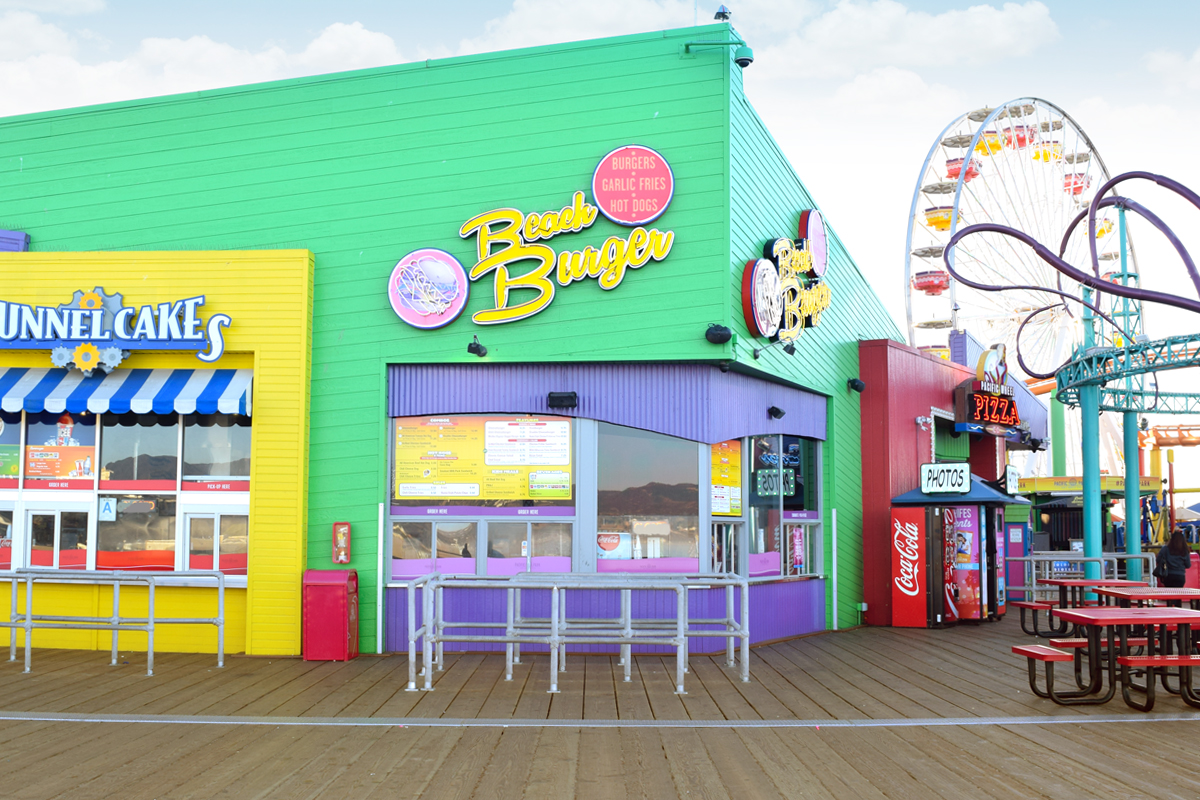 The
cheeseburger and fries at Beach Burger on Santa
Monica Pier—I could
happily eat at fifty favorite burger joints, but
when you’re standing on the Santa Monica Pier at
twilight, with the surfers and sunbathers retiring
for the day, and kids on the carousel and roller
coaster, there’s no prettier place to consume
America’s favorite sandwich.
The
cheeseburger and fries at Beach Burger on Santa
Monica Pier—I could
happily eat at fifty favorite burger joints, but
when you’re standing on the Santa Monica Pier at
twilight, with the surfers and sunbathers retiring
for the day, and kids on the carousel and roller
coaster, there’s no prettier place to consume
America’s favorite sandwich.
Irish
Coffee at San Francisco’s Buena Vista Bar—This
was the first place to introduce Irish
coffee in America, at a time when it was unknown
in Ireland, except for Shannon Airport, where it
was served as a promo for the whiskey. Opened in
1916, the old bar started serving the coffee
confection in 1952, and there’s a plaque on the
outside wall to prove it. The special glasses are
lined up by the dozen at the bar and the bar man
pours the whipped cream in with a slow motion
finesse that makes the drink all the more
decadent.
to introduce Irish
coffee in America, at a time when it was unknown
in Ireland, except for Shannon Airport, where it
was served as a promo for the whiskey. Opened in
1916, the old bar started serving the coffee
confection in 1952, and there’s a plaque on the
outside wall to prove it. The special glasses are
lined up by the dozen at the bar and the bar man
pours the whipped cream in with a slow motion
finesse that makes the drink all the more
decadent.
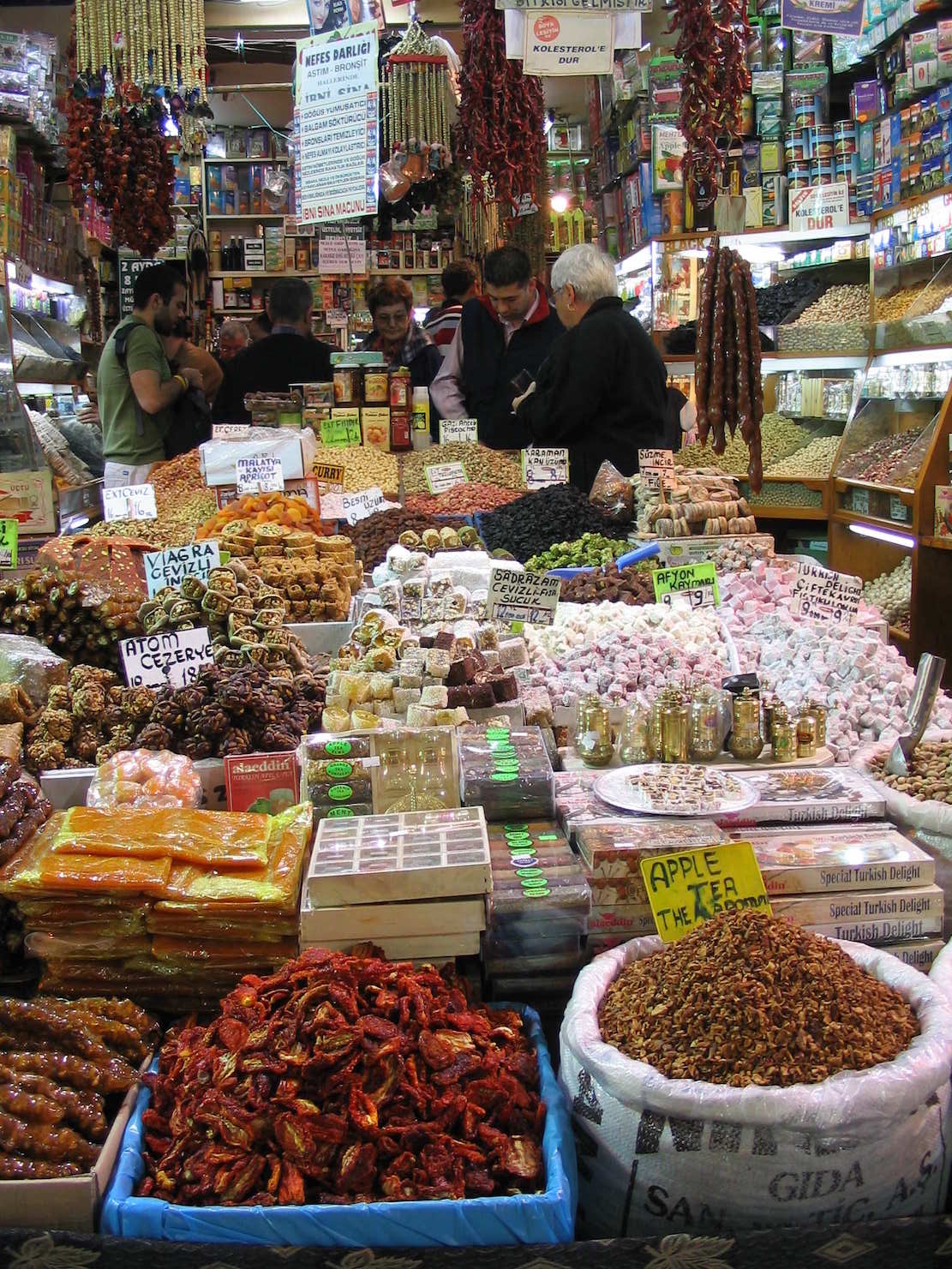
The vast spice bazaar markets of Istanbul—You
can be knocked over by the myriad aromas and
dazzled by the colors of Middle Eastern bazaars,
especially Istanbul’s Misir Çarșisi, built next to
the New Mosque in the 1660s. It’s hard to
understand how so many spice merchants in so many
pockets of the bazaar can make money, but
there they are every day, exhorting prospective
buyers and curious tourists that they will make a
special price on everything.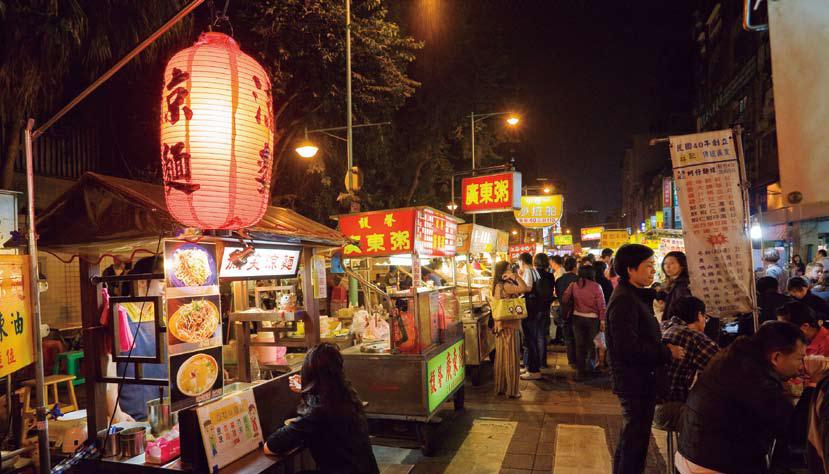
The vast night markets of Taiwan—The idea of night markets dates
to the Ninth century, and they teem with every
imaginable kind of food. In Taiwan many are run by
the Han people and feature xiaochi, which means “small
eats." You
go row by row, one stand to another; one is
frying, one is grilling; and you can smell the
“stinky tofu” stall from twenty feet away.
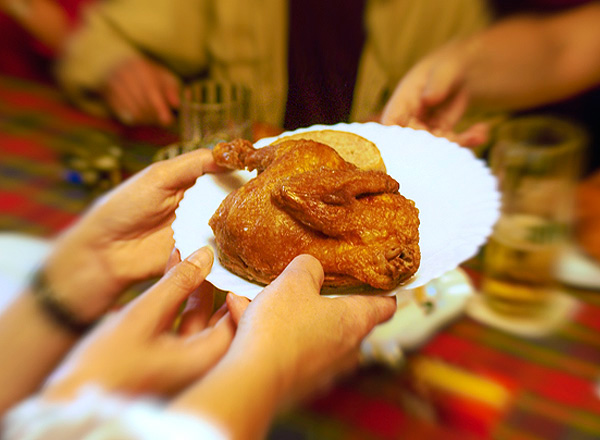
Roast chicken at Henne in Berlin.—Of all the roast chickens I’ve
ever had, Henne’s is extraordinary. Its crispness
derives, I believe, from being fried whole as well
as roasted, and its skin comes out crisp as
parchment. The little dining room is filled with
local Berliners throughout the evening. The only
other thing on the menu is potato salad, and of
course, the beer keeps flowing.
The
cheese fondue in Trois Sifflets in Vevey,
Switzerland—Once
fondue sets 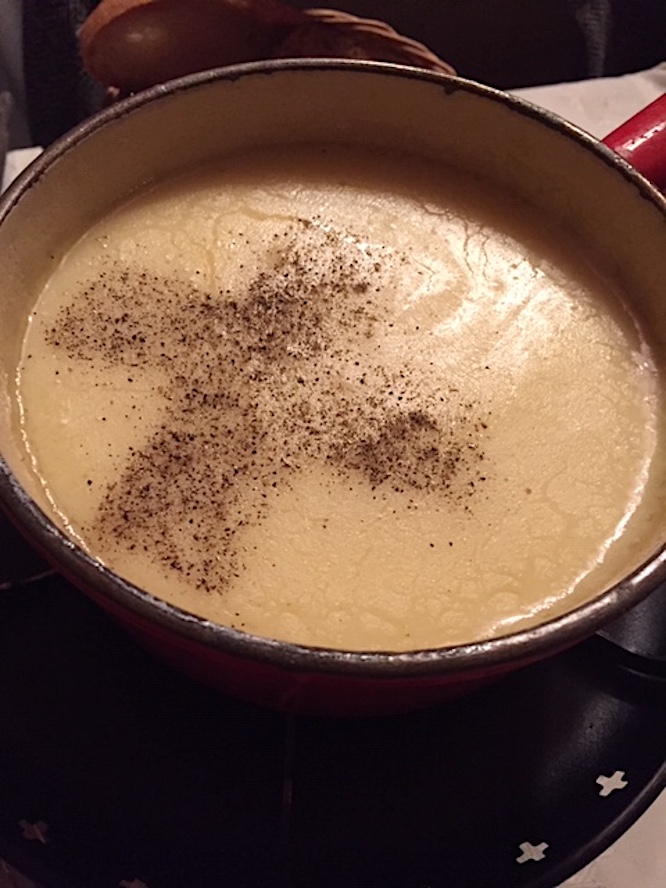 were
requisite wedding gifts in the 1960s, especially
after fondues, including chocolate, were
featured at the New York World’s Fair. The little
restaurant Trois Sifflets in Vevey, Switzerland,
not only has the right local cheeses and wines for
fondue but has an atmosphere in which the
presentation of the dish is greeted with a playing
of the Swiss national anthem.
were
requisite wedding gifts in the 1960s, especially
after fondues, including chocolate, were
featured at the New York World’s Fair. The little
restaurant Trois Sifflets in Vevey, Switzerland,
not only has the right local cheeses and wines for
fondue but has an atmosphere in which the
presentation of the dish is greeted with a playing
of the Swiss national anthem.
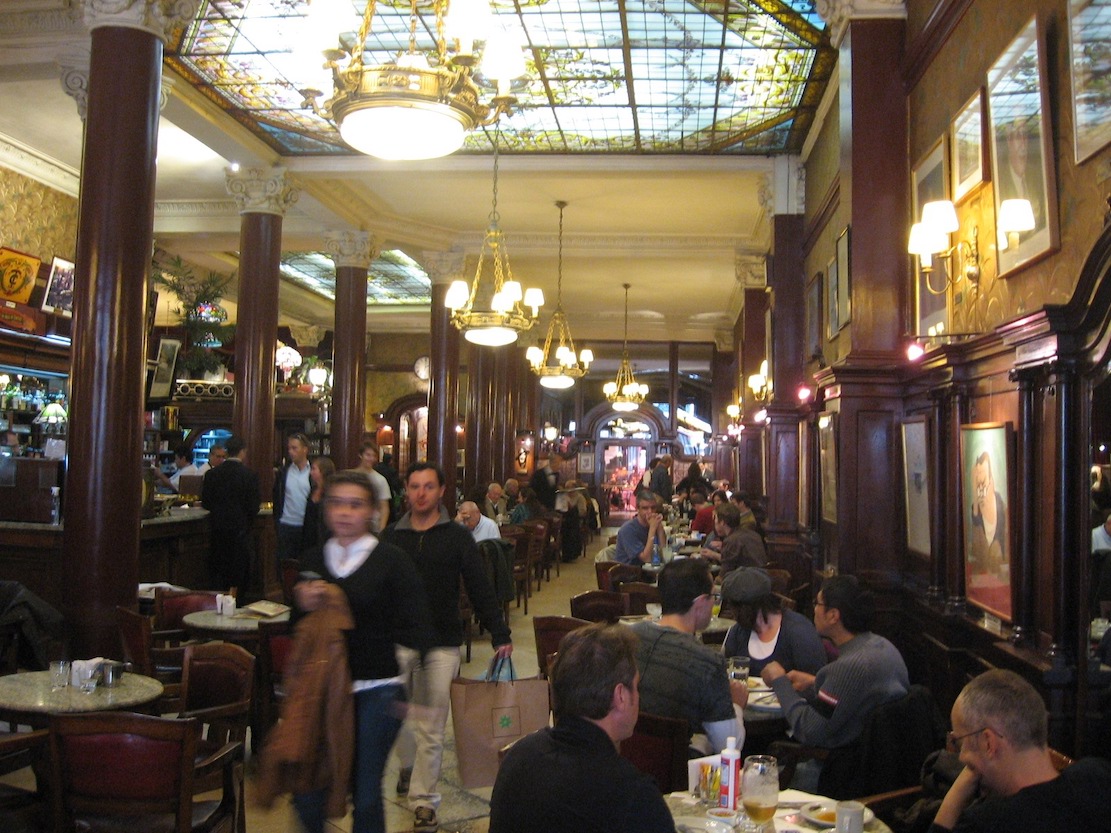 The draft
cider and smoked tenderloin lomito
ahumado at Café Tortoni in Buenos Aires—Outside
Café Tortoni on the Avenida de Mayo is a bronze
statue of Argentina’s most famous write, Jorge
Luis Borges, who frequented the place with his
artist friends. Everyone drinks the coffee, but
the cider is delicious, as is the smoked
tenderloin.
The draft
cider and smoked tenderloin lomito
ahumado at Café Tortoni in Buenos Aires—Outside
Café Tortoni on the Avenida de Mayo is a bronze
statue of Argentina’s most famous write, Jorge
Luis Borges, who frequented the place with his
artist friends. Everyone drinks the coffee, but
the cider is delicious, as is the smoked
tenderloin.
The
crab restaurants on the Chesapeake.—When
Chesapeake Bay is a little choppy, the
gulls sweeping the sky and the struggling live
crabs come in baskets, the seashore houses in
Maryland are ideal places to spend an afternoon
cracking the shell with a wooden mallet and
picking out the meat in the once blue-now red
shells, then adding a shake of lemon and Tabasco.
a little choppy, the
gulls sweeping the sky and the struggling live
crabs come in baskets, the seashore houses in
Maryland are ideal places to spend an afternoon
cracking the shell with a wooden mallet and
picking out the meat in the once blue-now red
shells, then adding a shake of lemon and Tabasco.
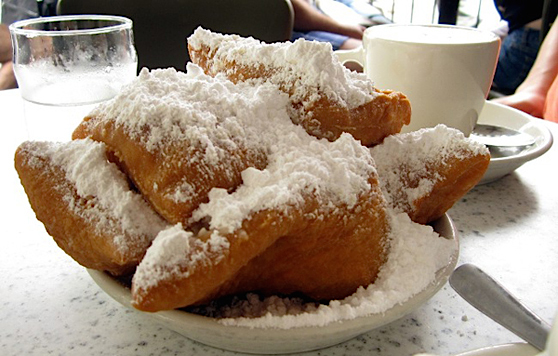 The
beignets and chicory coffee at the Café du Monde
in New Orleans—Immensely
touristy and, most of the year, intensely hot and
humid, the Café du Monde is still a requisite stop
for its hot-out-of-the oil beignets in a blizzard
of powdered sugar with a cup of chicory coffee
(which became popular in New Orleans during the
Civil War, when regular coffee was scarce). The
waiters all seem Asian, the wait for a table is
not too long, but you can also go right up to the
take-out window and eat outside the café on nearby
benches.
The
beignets and chicory coffee at the Café du Monde
in New Orleans—Immensely
touristy and, most of the year, intensely hot and
humid, the Café du Monde is still a requisite stop
for its hot-out-of-the oil beignets in a blizzard
of powdered sugar with a cup of chicory coffee
(which became popular in New Orleans during the
Civil War, when regular coffee was scarce). The
waiters all seem Asian, the wait for a table is
not too long, but you can also go right up to the
take-out window and eat outside the café on nearby
benches.
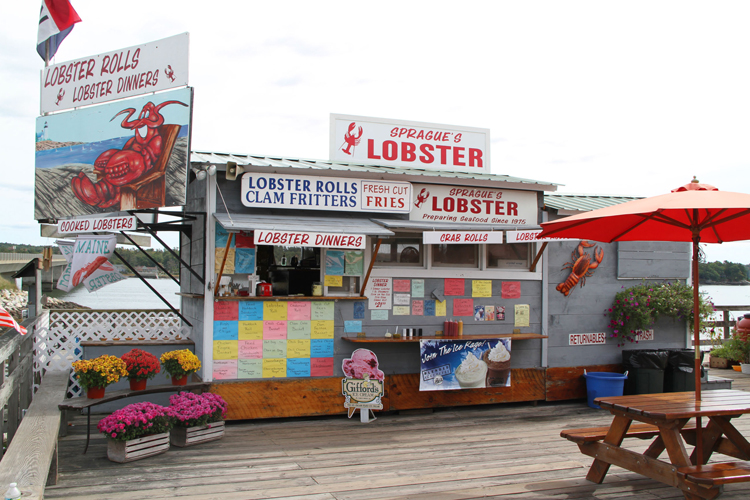
Lobster shacks in Maine—Like
the crab houses on the Chesapeake, a lobster house
in Maine always has outdoor seating, long lines
and the best, fattest lobsters, as well as fried
clams, raw shellfish and French fries. The sea
salt air makes everything smell and taste even
better. And there’s always the option of a creamy
lobster roll done with butter or mayo, hot or
cold.
❖❖❖
By John Mariani
LOVE AND PIZZA
Since, for the time being, I am unable to write about or review New York City restaurants, I have decided instead to print a serialized version of my (unpublished) novel Love and Pizza, which takes place in New York and Italy and involves a young, beautiful Bronx woman named Nicola Santini from an Italian family impassioned about food. As the story goes on, Nicola, who is a student at Columbia University, struggles to maintain her roots while seeing a future that could lead her far from them—a future that involves a career and a love affair that would change her life forever. So, while New York’s restaurants remain closed, I will run a chapter of the Love and Pizza each week until the crisis is over. Afterwards I shall be offering the entire book digitally. I hope you like the idea and even more that you will love Nicola, her family and her friends. I’d love to know what you think. Contact me at loveandpizza123@gmail.com
—John Mariani
To read previous chapters go to archive (beginning with March 29, 2020, issue.
LOVE AND PIZZA
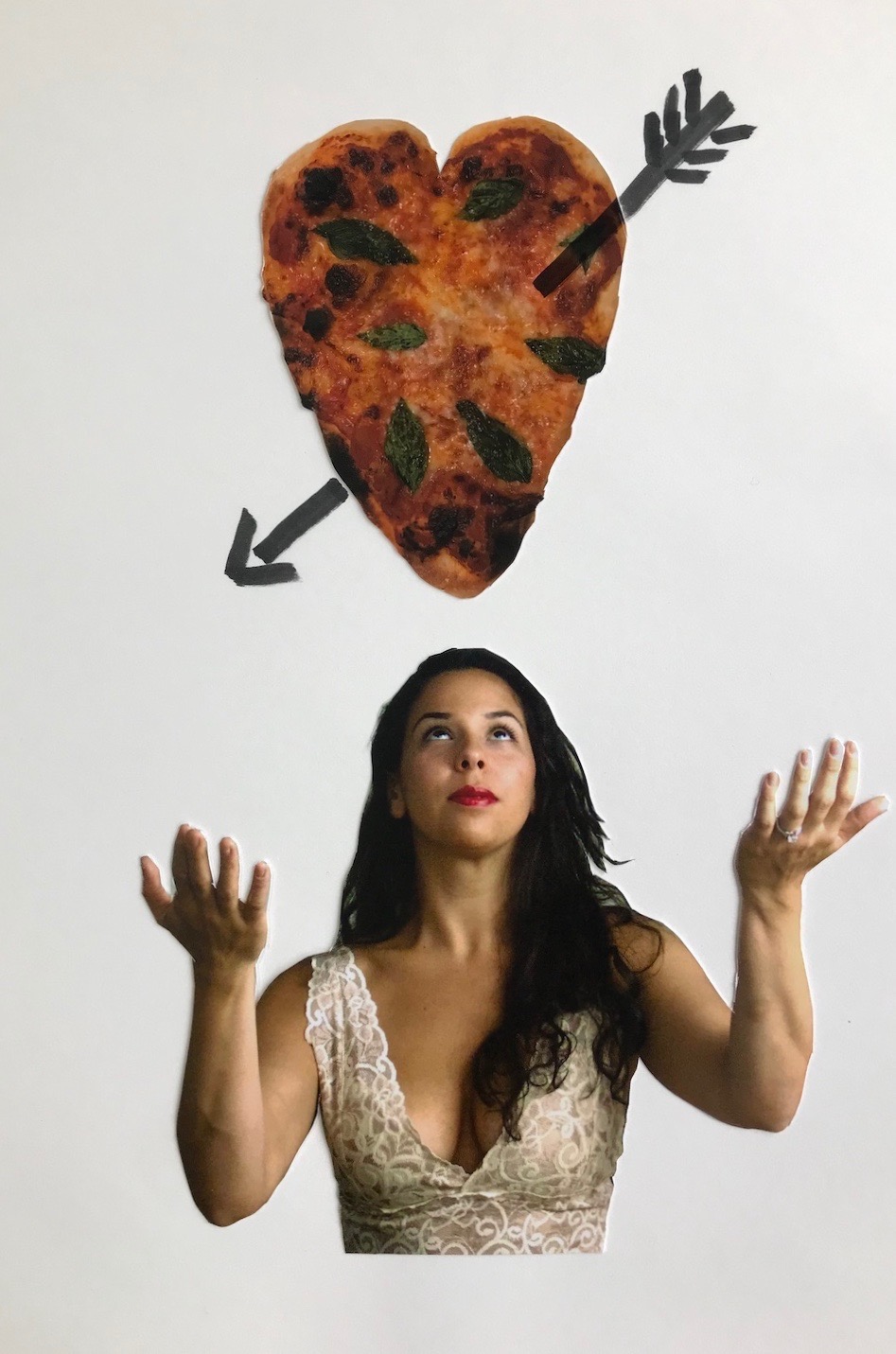
Cover Art By Galina Dargery
CHAPTER SEVEN
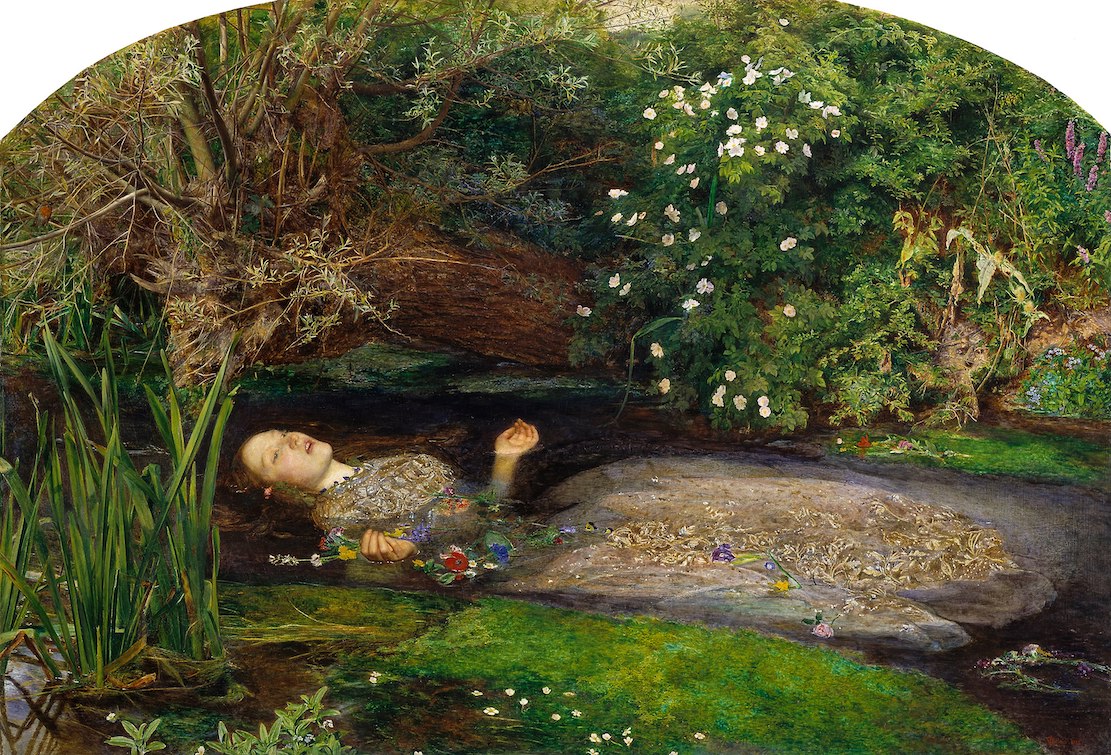
"Ophelia" By
John Everett Millais (1851)
That night in bed, in the room
she still shared with her sister, Nicola
said, “Natalie, do you ever think of leaving
the neighborhood?”
Natalie, who was seventeen
and had been allowed to have a little too much
wine at dinner, turned her face away from the
wall and said,
“Leave here? Oh, yeah, all the time. I’m
not going to college in New York. Don’t
tell Mom and Papa I told you, but I really want
to get away from this place. It’s
just too small and everybody here is the same.”
“I know what you mean,” said
Nicola, “I feel a lot the same way. This is an
old Italian neighborhood and it’s a wonderful
place to grow up.
You feel safe, people know you, you
have pride in who you are and where you came
from, but it’s not the whole world.”
“That’s what I mean. It’s okay for
Roseanne. All she ever wanted was to get
married and have kids.”
“That’s for sure.”
“And I
don’t know about you, but I want that too, but
eventually, not until I’m, like, in my late
twenties.
Why’s a girl around here have to get
married straight outta school? Y’know,
you
go to the movies, watch TV, and you see, like,
wild stuff going on, and if you watch the local
news, you’d think the Bronx is gonna be burned
to the ground before long. Do people ask you
about that?”
Nicola snapped her head back
and said, “Oh! All the
time,” then using a whiny, sniveling voice,
imitating those people: “Nee-KOH-luh, you live
in duh Bronx
with all the shootings and the drugs and
people
burning
their own houses down?”
“I get the same crap
question,” said Natalie. “And I don’t know
whether I hate them or the crime that makes them
think the way they do more.”
“I know what you mean. They
know nothing
about the Bronx, they’ve never spent one day in
the Bronx unless it’s to go to the Zoo—and then
they ask you, `Will I be safe if I take a train
or a taxi up there?’ And you know what I tell
them?”
“What?”
“I say, `Yeah, unless you
stick your stupid face in the lion’s cage.’”
“You actually say that to them?”
“I have, a few times. But,
y’know what, Nat?
You can’t entirely blame them. I
don’t know, maybe Belmont is the last place in
the Bronx that will survive. Maybe
Riverdale and Pelham Bay, too. But I
don't want to live in a neighborhood even I don’t
feel safe leaving to go to Castle Hill or
Tremont, even go to a Yankees game. You remember
what happened to Mickey Cesario and his brother
when they went to a bar near the Stadium? The
black kids jumped them and beat the crap out of
them. They were both in the hospital for a
month.”
“I remember that. Then
some of the assholes here wanted to go down
there and bust up some black guys—any
black guys—in revenge.”
“That would have
been a disaster, because then we’d have a gang
war going back and forth. I just hate that
freaking macho mentality on both sides,” said
Nicola, shaking her hands in the air. “I gotta
get away from it! I can’t wait to
go to Italy.”
“You think the guys there are
any better?”
“I don’t know, but I do
know that Milan is a very safe city and they
don’t have the drug problems we have here. And
the restaurants are better.”
Natalie swung her legs around
on her bed and looked straight at her sister,
saying in a deliberately annoying tone of voice, “And
maybe Nicky Santini will meet some hot
eye-talian guy who drives an Alfa-Romeo and
works in the fashion industry and sweeps you off
your feet.”
Nicola chuckled and said,
“Y’know something? Papa would like that. So
would Mom and Grandma.”
“And what about you, Nick?
You saying you wouldn’t like to marry a rich
Italian guy with great hair and an Alfa?”
“It’s crossed my mind, ”
Nicola said nonchalantly. “But,
that’s not why I’m going. I really, really
want to finish college and study art. Then
I’ll see.
Of course, if a guy like that sweeps me
off my feet next semester, well, I’ll tell him I
have to finish college back in New York, and
he’d have to accept that.”
There was a pause in the
conversation, then Natalie asked, “Nick, uh, you
don’t have to tell me, but are you still a ...
virgin?”
Nicola straightened her neck,
glared at her sister and said, “You’re
right: I don’t
have to tell you.” She paused then said, “But,
baby sister, you’ll be
the first to know! Now go to sleep.”
“Promise?”
“Yeah, you’re almost
eighteen,” said Nicola, who was only two and a
half years older. “I promise.”
In fact, though Nicola was
only twenty, the thought of losing her virginity
had pre-occupied her since she was Natalie’s
age. After
all, in the 1980s, girls lost their virginity
all the time by their late teens, mostly out
of love, or whatever passed for love among
teenagers.
The
real
old-timers, those of Teresa’s generation,
still remembered when marriages were arranged,
sometimes when the girl was only fifteen or
sixteen, and she was expected to begin producing
babies as soon as possible—new soldiers in the
army of Christ, as the priests would say—and
there was a very strong expectation that at
least one child would grow up to be a priest or
a nun—a Bride of Christ!
Such a scenario was another
of those once entrenched but now archaic
traditions that had died out soon after the
immigrants landed in America—even if some had
themselves been in arranged marriages. The
Italians and Jews and Germans and the rest
valued nothing more highly than education,
especially for their sons, but, since America
was offering it for free in the public schools,
why not have a daughter go all the way up to
sixth grade, maybe even high school? An
arranged marriage would be considered an affront
to an immigrant family in a country where people
could do as they wished. Still,
most
people thought it would be better for everyone
if girls and boys married within their own
group. The
priests and nuns made that very clear, and a
dispensation to marry a Protestant or Jew was
not easy to come by for a Catholic, and to convert to
the religion of the husband- or wife-to-be was
wholly anathema.
Nevertheless, the idea of
virginity was always and everywhere an obsession
among teenagers.
The Church had pounded it into their
heads that there were really only two kinds of
women—those like the Virgin Mary and, by
extension, their own mothers, and the wicked
daughters of Eve, the harlots, the women
consumed by their own lusts, seeking to drag
good Catholic boys to their damnation for what
they called a “roll in the hay” or a “bounce in
the sack.”
The priests and nuns would
warn that “Seven minutes in heaven would lead to
an eternity in Hell!” Some of the young guys
would joke, “Hey, I never lasted seven minutes!”
And others boasted, “Yeah, well, with a girl
like Rosemary Scamorza, it’d be worth it!” Everyone
was told the story of the prom couple who had
sex in their car and then a tree fell on the car
on the way home and killed the girl, who went
straight to hell, while her errant boyfriend—who
could be forgiven his sin by confession the
following Saturday—was forced to live his life
in the agony of knowing that he’d helped send
her there.
 Yet almost
every teenage and young adult Italian-American
male insisted that, when it came to marrying a
girl, she would have to be a virgin, and if he were
the one to take that virginity away, then he’d
do the right thing and marry her.
Yet almost
every teenage and young adult Italian-American
male insisted that, when it came to marrying a
girl, she would have to be a virgin, and if he were
the one to take that virginity away, then he’d
do the right thing and marry her.
Such conservative religious
and social views had, in many other parts of the
country, not least on college campuses,
dissipated during the decades of “free love,”
“do your own thing,” and “women’s lib,” but they
were still as strong in the Catholic sections of
the Bronx as in the Bible Belt of the South.
As she lay in bed that night,
Nicola thought about the absurdity of such
beliefs, how sexuality was such a beautiful and
natural part of one’s self, the way she’d seen
it portrayed
in Renaissance paintings of Greek gods in
pastoral landscapes by Giorgone and Tintoretto. She
had never—yet—seen the Sistine Chapel, but she
knew every inch of Michelangelo’s ceiling from
books, an expanse churning with human beings in
all their glorious nakedness, freshly sprung
from the loving mind and electric touch of God.
Nicola loved the white purity
of the marble used for Rodin’s statue of “The
Kiss” (left)
the moving beauty of Millais’ Pre-Raphaelites
depictions of “Ophelia” and the brash nudity of
Manet’s not-quite-beautiful “Olympia” (below)
based on Titian’s “Venus of Urbino.” There
could not possibly be anything wrong or bad
about such an idea of physical, naked beauty and
loving sex.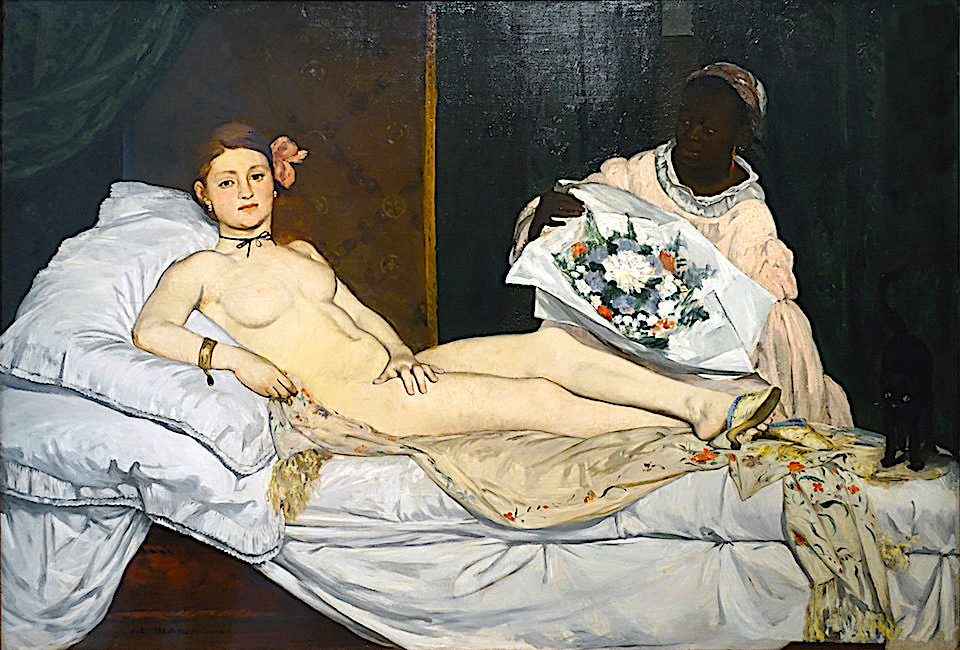
Yet she also reflected on the
fact that she was, at twenty, still a virgin,
and that it had been more a matter of choice
than it was religious or moral opposition to the
idea of sex.
Nicola was not much taken with the
sentiment about “waiting for the perfect guy to
come along.”
No, that was not it. She
hadn’t “saved” herself for the sake of an ideal,
but neither were her passions so inflamed as to
bed down with someone she did not care deeply
about.
She had certainly battled
her way out of more than a few clumsy clinches
without using the excuse that she was saving
herself for a husband. But Nicola knew that
sounded old fashioned, even snobbish, and she
had no intention of avoiding the inevitable for
much longer.
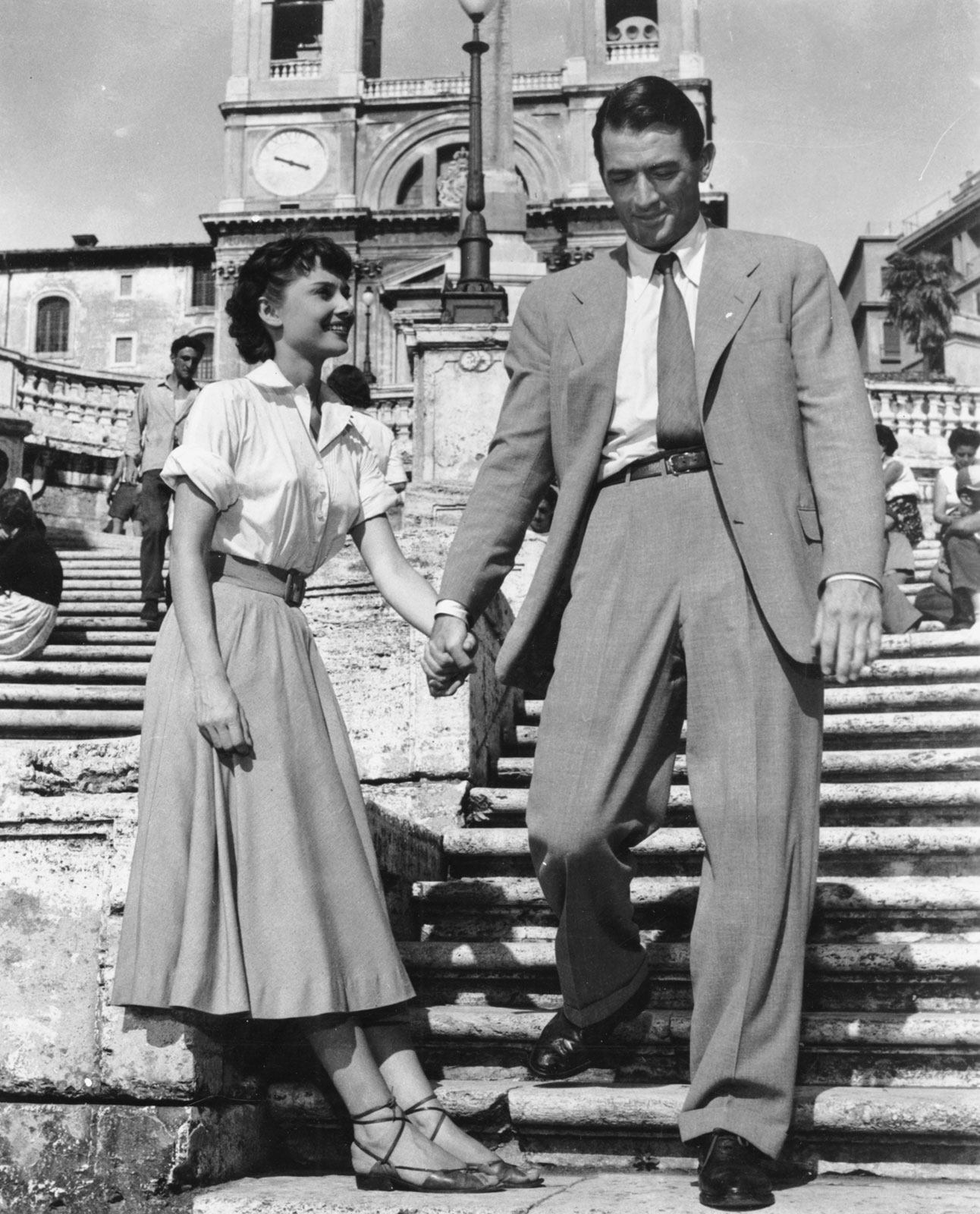 Maybe
in Italy, she told herself, it will be the right
man and the right place and the right wine. She’d
seen all the 1950s and 1960s movies about
American spinsters s who traveled to Italy after
the war—“Three Coins in the Fountain,”
“Summertime,” “The Light in the Piazza.” “Roman
Holiday” (left) was different: in
that one Audrey Hepburn played a naïve European
princess on holiday in Rome, where she met an
American news reporter played by Gregory Peck. And
while Nicola, like most women, adored the
impossibly handsome Italian actor Marcello
Mastroianni, she recognized that most of the
time he played a helpless loser of a
Maybe
in Italy, she told herself, it will be the right
man and the right place and the right wine. She’d
seen all the 1950s and 1960s movies about
American spinsters s who traveled to Italy after
the war—“Three Coins in the Fountain,”
“Summertime,” “The Light in the Piazza.” “Roman
Holiday” (left) was different: in
that one Audrey Hepburn played a naïve European
princess on holiday in Rome, where she met an
American news reporter played by Gregory Peck. And
while Nicola, like most women, adored the
impossibly handsome Italian actor Marcello
Mastroianni, she recognized that most of the
time he played a helpless loser of a 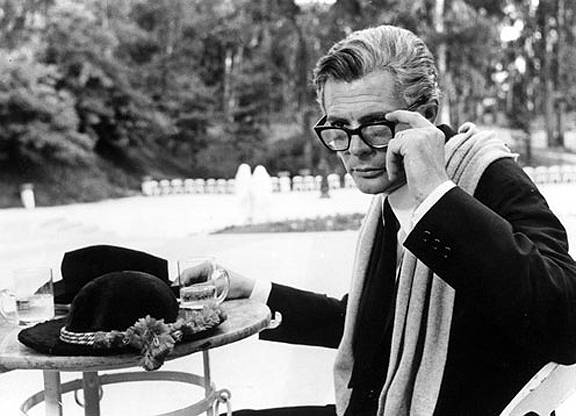 man,
incapable of coping with a modern woman.
man,
incapable of coping with a modern woman.
In “Divorce Italian Style” he actually
plotted to become a cuckold so he could marry a
girl less than half his age. In
“Yesterday, Today and Tomorrow” Mastroianni
played three parts—that of a poor Neapolitan
worn to a frazzle by his wife’s demands to
produce more babies; the morally weak lover of a
rich married woman; and a neurotic and spoiled
rich man desperate for sex with a prostitute who
refuses him in an effort to reform a student for
the priesthood who has fallen in love with her. All
the women were played by Sophia Loren, who also
starred in “Marriage Italian Style,” in which
Mastroianni’s upper class ego prevents him from
marrying a prostitute who has had a son by him.
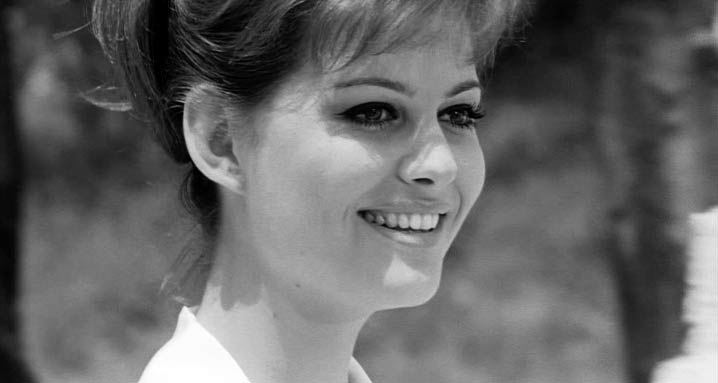 Nicola
actually preferred to believe that Italian men
of the ‘80s would be more like the world weary
romantic played by Mastroianni (above) in
Federico Fellini’s film “8½,” about a director
like himself whose self-doubt is momentarily
muted by the appearance of the stunningly
beautiful actress Claudia Cardinale (left), who
played herself in the movie. Some said Nicola
looked a little like her.
Nicola
actually preferred to believe that Italian men
of the ‘80s would be more like the world weary
romantic played by Mastroianni (above) in
Federico Fellini’s film “8½,” about a director
like himself whose self-doubt is momentarily
muted by the appearance of the stunningly
beautiful actress Claudia Cardinale (left), who
played herself in the movie. Some said Nicola
looked a little like her.
And
if
Nicola met such a man—younger, of course—maybe
her concern about being twenty years old and
still a virgin would simply evaporate in one
glorious evening.
It was
a comforting notion to fall asleep to.
FROM THE 16TH CENTURY
By John Mariani
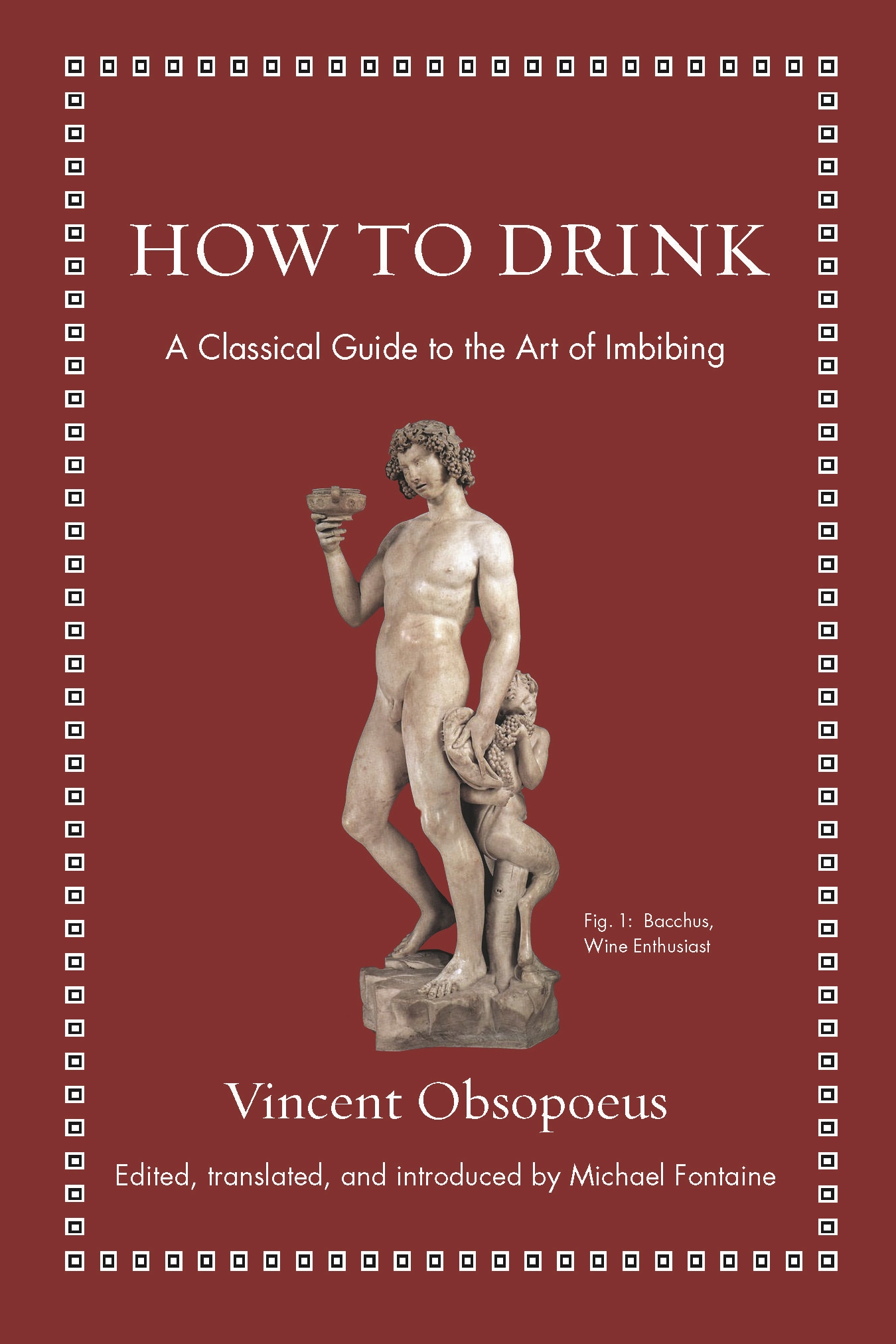
Wine writing was once a gentleman’s avocation, and those who wrote well about wine, like Evelyn Waugh, Ernest Hemingway and Art Buchwald, were far more devoted to the pleasures of drinking it than in analyzing it down to its last gram of tannin and degree of acidity. Indeed, today’s wine writers are largely note takers who conjure up tedious comparisons to everything from tobacco box aromas to the flavors of bacon.
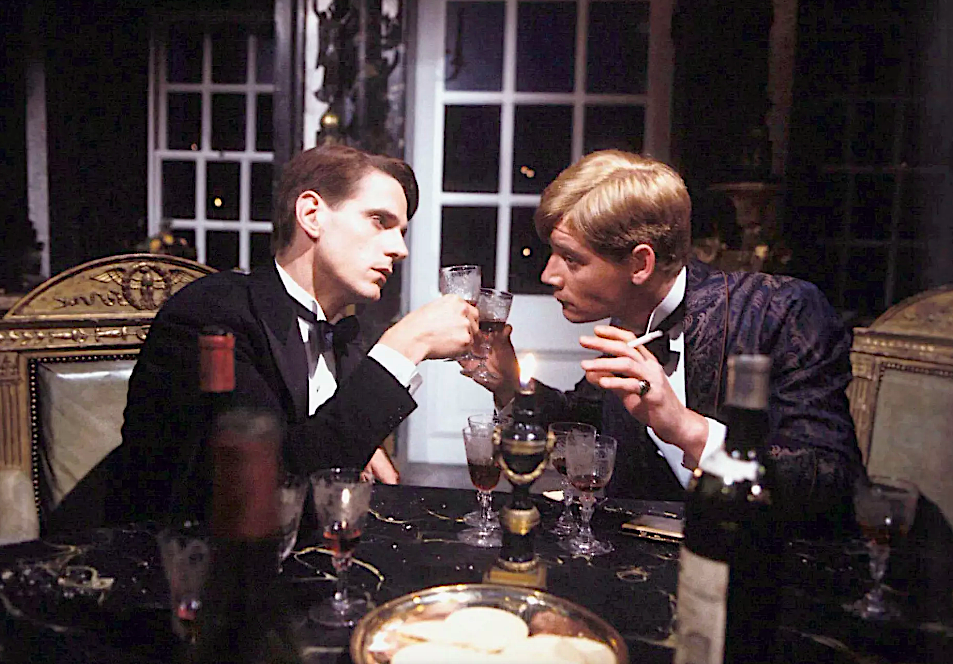 Waugh, in fact, sent up such drivel
long ago when he had his effete characters,
Charles and Sebastian, in Brideshead
Revisited (left)
describe wine thus:
Waugh, in fact, sent up such drivel
long ago when he had his effete characters,
Charles and Sebastian, in Brideshead
Revisited (left)
describe wine thus:
'...It is a little, shy wine like a gazelle.'
'Like a leprechaun.'
'Dappled, in a tapestry meadow.'
'Like a flute by still water.'
'...And this is a wise old wine.'
'A prophet in a cave.'
'...And this is a necklace of pearls on a white neck.'
'Like a swan.'
'Like the last unicorn.'
So it is always good to find a new book on the
shelves that regards wine with both pleasure and
common sense, including a good deal about manners
and drunkenness. How to Drink:
A Classical Guide to the Art of Drinking
(Princeton U. Press; $16.95) was written by a
garrulous fellow named Vincent Obsopoeus, who did
so in reaction to the barbarous drunken behavior
demonstrated by the Germans of his day, who were
consuming 120 liters of wine per person per year.
His day was the 16th century.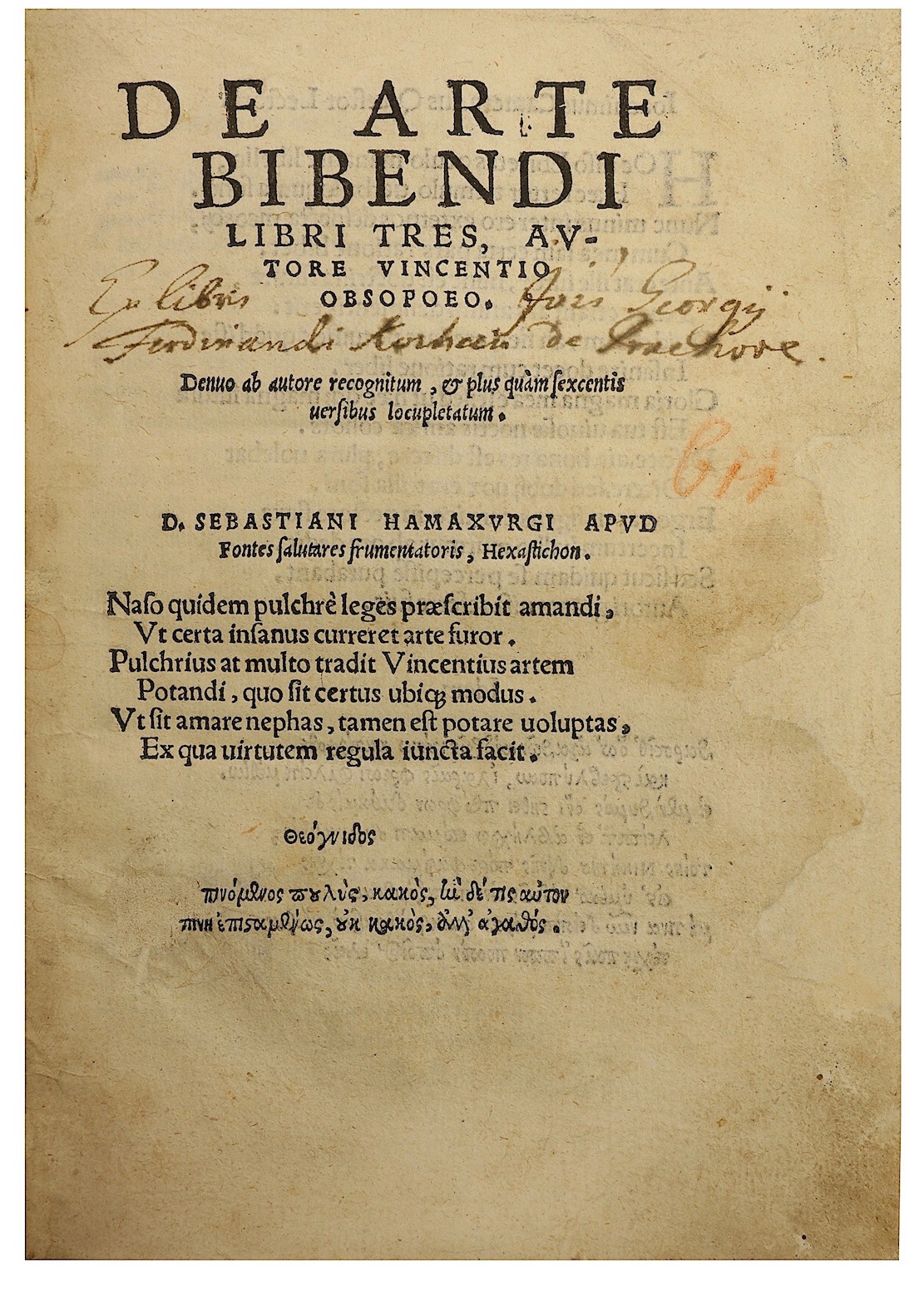
While not himself a prude,
Obsopoeus (c. 1498-1539) was employed as a teacher
at an elite high school in Ansbach, Germany, and
his very long volume, De Arte
Bibendi, written as Latin poetry and,
inspired by Ovid’s Art of Love,
written in the second century BCE, was an attempt
to alter students’ behavior, advising moderation
rather than total sobriety. His success in
persuading any one is not recorded, but we can
assume that 16th century teenagers were probably
no different than they are today when it comes to
boisterous, unbridled behavior.
Obsopoeus (below) was part of the emerging
Humanist movement during the Protestant
Reformation and, though not well liked by his
colleagues, was building a reputation as a
monastic scholar when he died in his early
forties, after seeing a second edition of his book
to press.
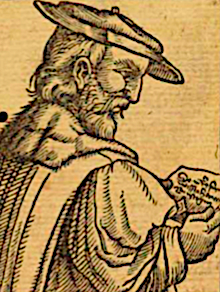 Right
at the start Obsopoeus, invoking Bacchus, the god
of wine, explained, “My mind’s not burning to
write for the mob of drunks; they waste your
bounty night and day and that’s stupid . . . If
you drink in an uneducated manner, wine will hurt
you; If you’re educated about your drinking, wine
is enjoyable and good.”
Right
at the start Obsopoeus, invoking Bacchus, the god
of wine, explained, “My mind’s not burning to
write for the mob of drunks; they waste your
bounty night and day and that’s stupid . . . If
you drink in an uneducated manner, wine will hurt
you; If you’re educated about your drinking, wine
is enjoyable and good.”
He says drinking at home with
your wife is the best way to enjoy life, rather
than with rowdy friends. But, he acknowledged,
it’s better to escape a “quarrelsome black demon”
of a wife by going out with your friends. Acquiring
rich friends is also a good way to go, by “fawning
and flattering and bowing and scraping” if
necessary. Drinking with heretics, which include
Jews and Muslims, was out of the question, though
he finds Catholics wonderfully gregarious
company.
His vision of a hangover
is worthy of Langland’s Piers
Plowman, if not Dante’s Inferno,
replete with drunken women named Dementia,
Self-Indulgence, Memory Loss and Sloth, all
surrounded by a disgusting array of former
drunkards turned into beasts, with cows “throwing
up frogs” and donkeys “puking up books.”
How to prevent a hangover?
Wearing an amethyst ring seems to work in the
Sahara and India. Eating radishes, raw cabbage,
onions, hazelnuts and dried figs is somewhat less
expensive.
About a hundred pages later
Obsopoeus addresses the topic of how to win at
drinking games by nursing your drinks and eating
something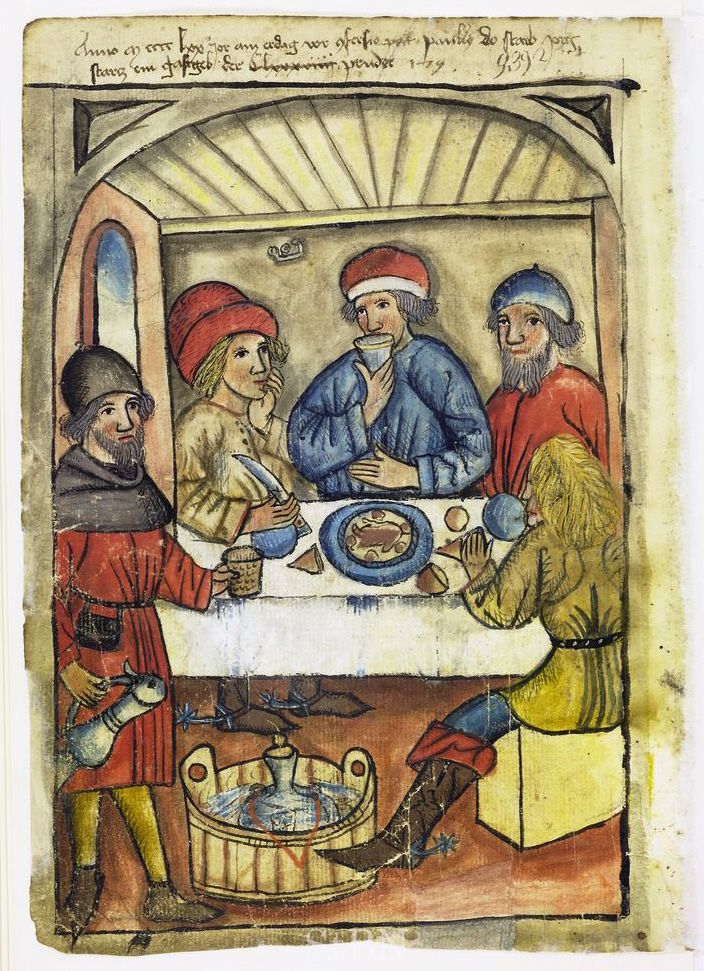 first.
Never play against relatives! But sometimes you’ll
just have to cheat by swapping strong wines for
weak ones, serving the former to your opponents
and the latter to yourself.
first.
Never play against relatives! But sometimes you’ll
just have to cheat by swapping strong wines for
weak ones, serving the former to your opponents
and the latter to yourself.
At the end of what he calls
“this silly poem of mine,” Obsopoeus insists he
should be taken seriously but lightheartedly.
After all, the poem “doesn’t teach kissing [and]
there’s nothing erotic, no illicit sex”—whose
inclusion would probably have made it a best
seller among his students.
American editor and translator
Michael Fontaine has rendered Obsopoeus’s
Classical Latin in much the same spirit, with a
rollicking lilt that largely justifies the
idiomatic. On occasion this tilts a tad too far
into the present, as when Fontaine translates —“Adde
locutores mendacia vana vomentes: immodica
cunctos garrulitate necant” into,
“Blacklist, too, speakers who churn out one absurd
lie after another: they kill us with their
ceaseless BS” (an abbreviation that first appeared
in American print as of 1900), since
the Latin slang word for “bullshit” would be stercus. In the
same way, “Dude,
I went, it’s your turn!” is too hipster for “Heus, mihi
redde -,” especially since Obsopoeus is a
teacher of teenage students, not their pal.
But it all
makes for an enjoyable read (the Latin is printed
on the opposite page from the English), and, for
the most part, makes good, genial sense at a time
when wine is now being taken far too seriously as
a subject to be put under a microscope rather than
be sloshed into a glass.
SPONSORED BY

Any of John Mariani's books below may be ordered from amazon.com.
 The Hound in Heaven
(21st Century Lion Books) is a novella, and
for anyone who loves dogs, Christmas, romance,
inspiration, even the supernatural, I hope you'll find
this to be a treasured favorite. The story
concerns how, after a New England teacher, his wife and
their two daughters adopt a stray puppy found in their
barn in northern Maine, their lives seem full of promise.
But when tragedy strikes, their wonderful dog Lazarus and
the spirit of Christmas are the only things that may bring
his master back from the edge of despair.
The Hound in Heaven
(21st Century Lion Books) is a novella, and
for anyone who loves dogs, Christmas, romance,
inspiration, even the supernatural, I hope you'll find
this to be a treasured favorite. The story
concerns how, after a New England teacher, his wife and
their two daughters adopt a stray puppy found in their
barn in northern Maine, their lives seem full of promise.
But when tragedy strikes, their wonderful dog Lazarus and
the spirit of Christmas are the only things that may bring
his master back from the edge of despair. WATCH THE VIDEO!
“What a huge surprise turn this story took! I was completely stunned! I truly enjoyed this book and its message.” – Actress Ali MacGraw
“He had me at Page One. The amount of heart, human insight, soul searching, and deft literary strength that John Mariani pours into this airtight novella is vertigo-inducing. Perhaps ‘wow’ would be the best comment.” – James Dalessandro, author of Bohemian Heart and 1906.
“John Mariani’s Hound in Heaven starts with a well-painted portrayal of an American family, along with the requisite dog. A surprise event flips the action of the novel and captures us for a voyage leading to a hopeful and heart-warming message. A page turning, one sitting read, it’s the perfect antidote for the winter and promotion of holiday celebration.” – Ann Pearlman, author of The Christmas Cookie Club and A Gift for my Sister.
“John Mariani’s concise, achingly beautiful novella pulls a literary rabbit out of a hat – a mash-up of the cosmic and the intimate, the tragic and the heart-warming – a Christmas tale for all ages, and all faiths. Read it to your children, read it to yourself… but read it. Early and often. Highly recommended.” – Jay Bonansinga, New York Times bestselling author of Pinkerton’s War, The Sinking of The Eastland, and The Walking Dead: The Road To Woodbury.
“Amazing things happen when you open your heart to an animal. The Hound in Heaven delivers a powerful story of healing that is forged in the spiritual relationship between a man and his best friend. The book brings a message of hope that can enrich our images of family, love, and loss.” – Dr. Barbara Royal, author of The Royal Treatment.
 |
The Encyclopedia of American Food and Drink by John F. Mariani (Bloomsbury USA, $35) Modesty forbids me to praise my own new book, but let me proudly say that it is an extensive revision of the 4th edition that appeared more than a decade ago, before locavores, molecular cuisine, modernist cuisine, the Food Network and so much more, now included. Word origins have been completely updated, as have per capita consumption and production stats. Most important, for the first time since publication in the 1980s, the book includes more than 100 biographies of Americans who have changed the way we cook, eat and drink -- from Fannie Farmer and Julia Child to Robert Mondavi and Thomas Keller. "This book is amazing! It has entries for everything from `abalone' to `zwieback,' plus more than 500 recipes for classic American dishes and drinks."--Devra First, The Boston Globe. "Much needed in any kitchen library."--Bon Appetit. |
"Eating Italian will never be the same after reading John Mariani's entertaining and savory gastronomical history of the cuisine of Italy and how it won over appetites worldwide. . . . This book is such a tasteful narrative that it will literally make you hungry for Italian food and arouse your appetite for gastronomical history."--Don Oldenburg, USA Today. "Italian
restaurants--some good, some glitzy--far
outnumber their French rivals. Many of
these establishments are zestfully described
in How Italian Food Conquered the World, an
entertaining and fact-filled chronicle by
food-and-wine correspondent John F.
Mariani."--Aram Bakshian Jr., Wall Street
Journal.
"Equal parts
history, sociology, gastronomy, and just
plain fun, How Italian Food Conquered the
World tells the captivating and delicious
story of the (let's face it) everybody's
favorite cuisine with clarity, verve and
more than one surprise."--Colman Andrews,
editorial director of The Daily
Meal.com. "A fantastic and fascinating
read, covering everything from the influence
of Venice's spice trade to the impact of
Italian immigrants in America and the
evolution of alta cucina. This book will
serve as a terrific resource to anyone
interested in the real story of Italian
food."--Mary Ann Esposito, host of PBS-TV's
Ciao
Italia. "John Mariani has written the
definitive history of how Italians won their
way into our hearts, minds, and
stomachs. It's a story of pleasure over
pomp and taste over technique."--Danny Meyer,
owner of NYC restaurants Union Square
Cafe, The Modern, and Maialino.
|
 |
 |
 |
 |
 |
 |
 |
 |
 Everett Potter's Travel Report:
Everett Potter's Travel Report: 
 Eating Las Vegas
JOHN CURTAS has been covering the Las Vegas
food and restaurant scene since 1995. He is
the co-author of EATING LAS VEGAS – The 50
Essential Restaurants (as well as
the author of the Eating Las Vegas web site: www.eatinglasvegas.
He can also be seen every Friday morning as
the “resident foodie” for Wake Up With the
Wagners on KSNV TV (NBC) Channel 3 in
Las Vegas.
Eating Las Vegas
JOHN CURTAS has been covering the Las Vegas
food and restaurant scene since 1995. He is
the co-author of EATING LAS VEGAS – The 50
Essential Restaurants (as well as
the author of the Eating Las Vegas web site: www.eatinglasvegas.
He can also be seen every Friday morning as
the “resident foodie” for Wake Up With the
Wagners on KSNV TV (NBC) Channel 3 in
Las Vegas.
MARIANI'S VIRTUAL GOURMET
NEWSLETTER is published weekly. Publisher: John Mariani. Editor: Walter Bagley. Contributing Writers: Christopher Mariani,
Robert Mariani, Misha Mariani, John A. Curtas, Gerry Dawes, Geoff Kalish,
and Brian Freedman. Contributing
Photographer: Galina Dargery. Technical
Advisor: Gerry
McLoughlin.
If you wish to subscribe to this
newsletter, please click here: http://www.johnmariani.com/subscribe/index.html
© copyright John Mariani 2020

